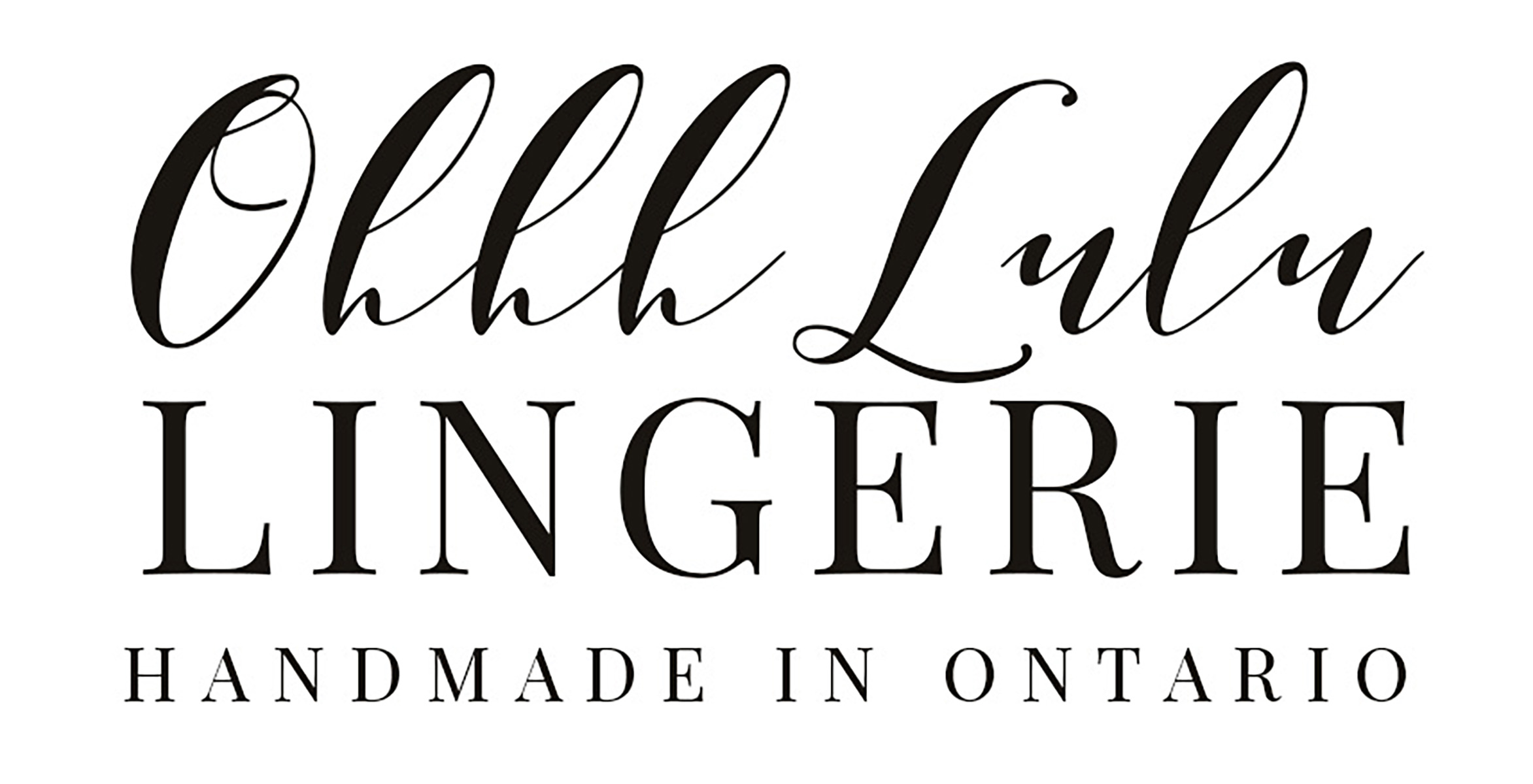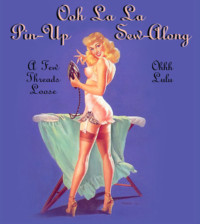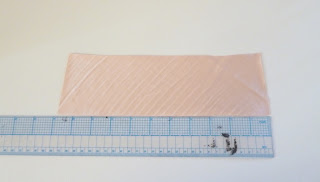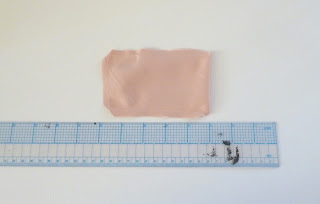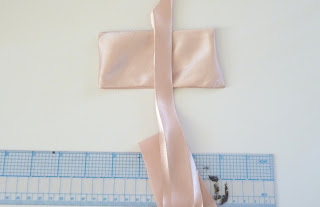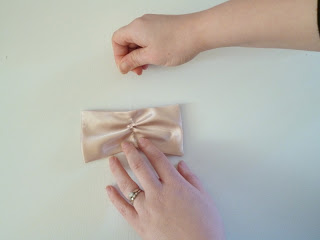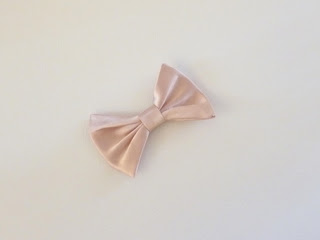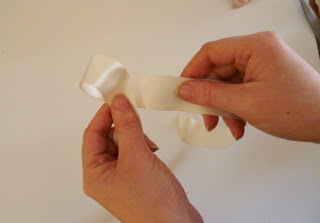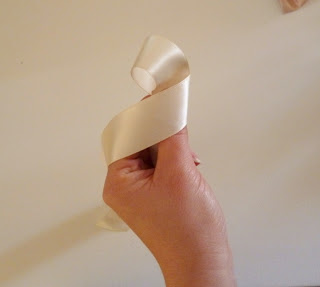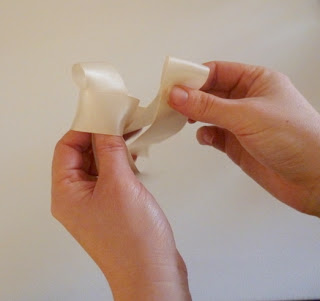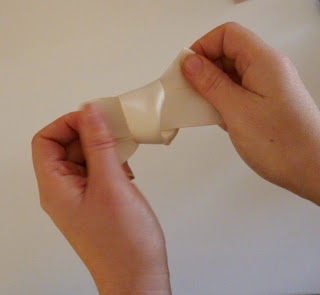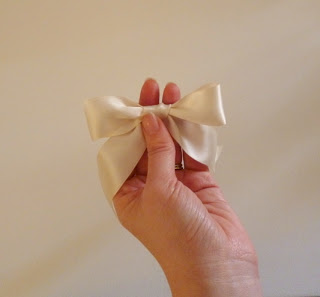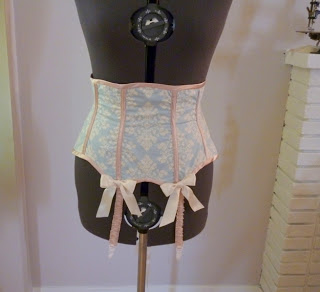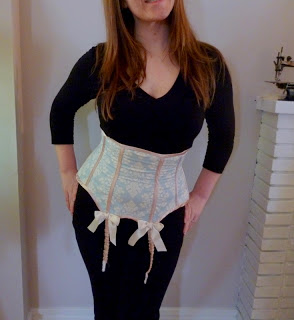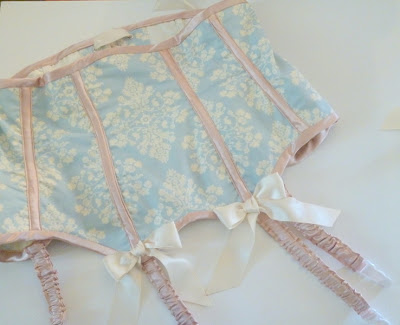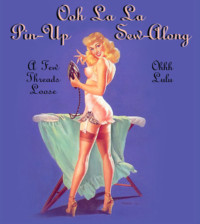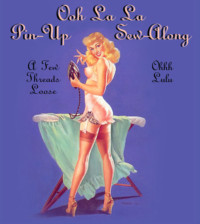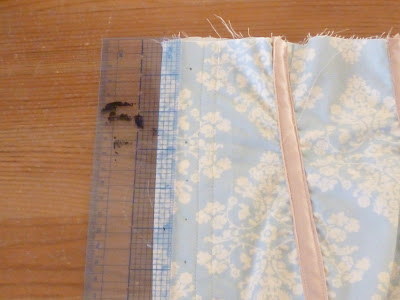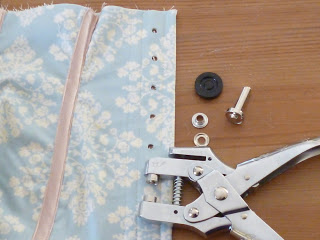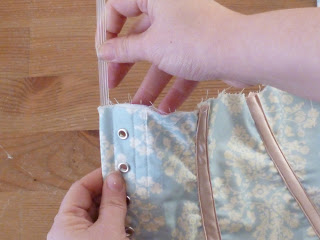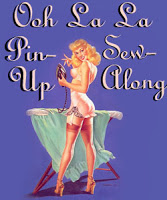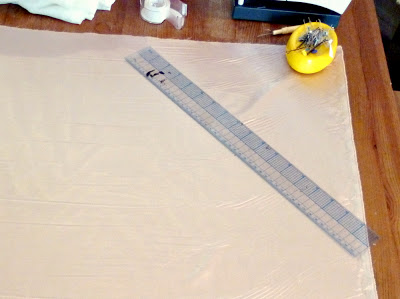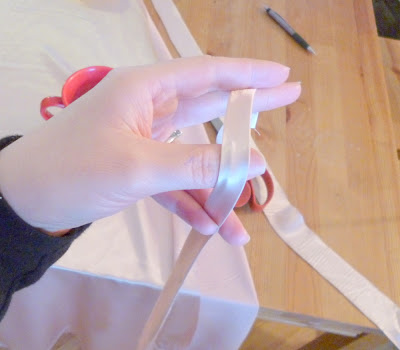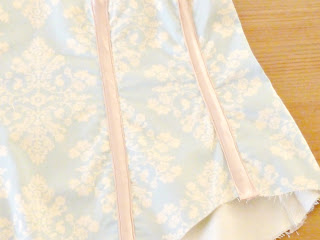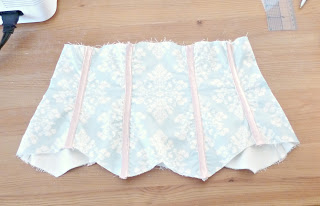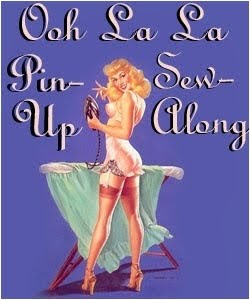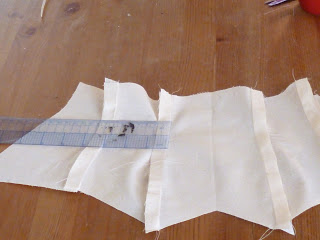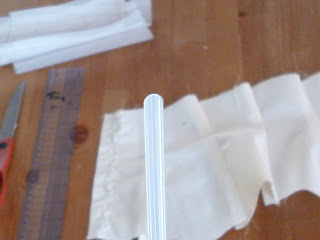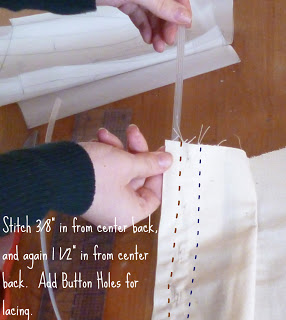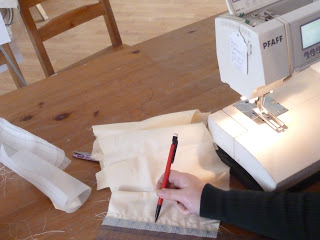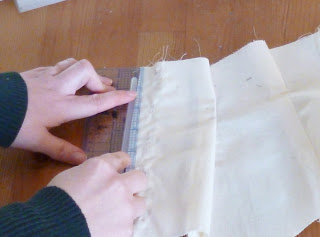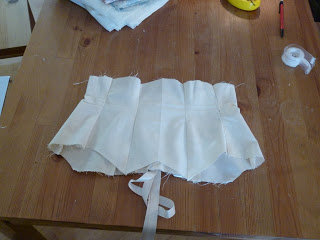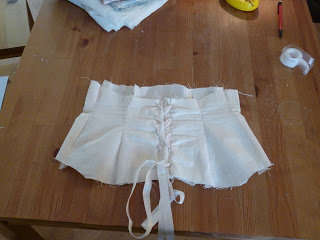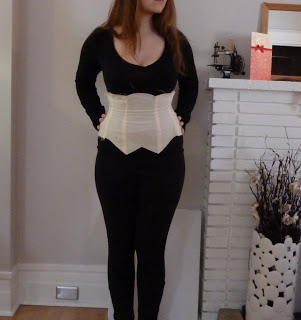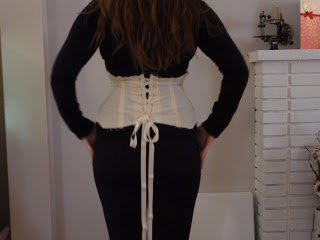corsets
There are a few options for finishing the back of your binding. You can stitch by hand – I prefer the look of a slip stitch, but can use a cross stitch, straight stitch, or any stitch you like!
Using your markings as a guide, punch small holes where your eyelets will go. You can use an awl, or grommet pliers to make your hole.
Eyelets can be applied a number of ways – there are two common tools pictured above.
1. Grommet Pliers – these can be found at most hardware store, and will set 2 piece grommets. Grommets come in many different sizes, so make sure the pliers you buy fit the eyelets you want to set.
2. Tool & Die – These often come with eyelet packages you purchase at the fabric store, and are set with a hammer.
I used grommet pliers to apply my grommets, and used a 2 piece grommet. Two piece grommets are preferable for a corset that is going to be worn for an extended period of time, or if you plan on wearing it a lot. Eyelets without washers tend to have rough edges and will work their way through your fabric, if you are applying much strain to the fabric around it.
Remember to insert a bone on either side of your eyelets to keep your lacing laying flat. This is the only spot in your corset where I really, really advise that you use boning. The rest is up to you!
Now, lace it up and see how it fits! Do you feel like you need to add more boning? Does everything lay flat?
Next we are onto our binding.
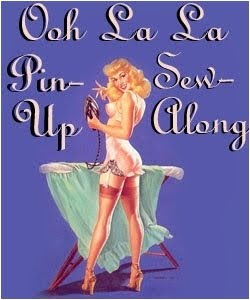
Before adding these contrasting bands, make small tacks where the boning is to end on your bone channels. I am not boning the entire length of my seams in this corset. The pattern is marked where the bones are to stop.
So, Why can’t you just stitch on a bone casing line this to put your bone under? Well, you can – if you are using something like a twill tape casing, or a sturdier fabric. With a single layer of charmeuse, your bone will quickly, and I mean quickly work its way through these bias strips. Your bone needs a couple of layers to sit in between, in order to have a garment that will last.
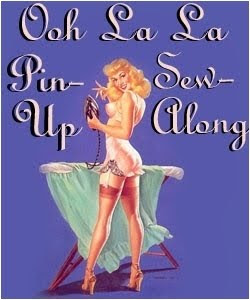
Wrong sides together, pin your seams in place, stitch ¼” in from raw edge.
If you are flat lining your corset, to prevent too much bulk in your seams, trim back the excess, staggering the layers.
Press, and fold right sides together so your first seam is encased. Stitch ⅜” in, and press to one side. Stitching as close to the edge of your seam as you can, top stitch the seam down.
There are lots of layers in there! The boning will get inserted right into these channels. Be precise with your stitching, or it will get tight to put your boning in!
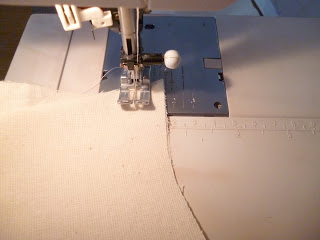
For the laced corset – On the centre back pannel, fold your 2″ extension flap over (towards the inside), press, and stitch 3/8″ in from the centre back edge to form a bone casing, and again 1 1/2″ in from the center back. We will add 2 bones to the mock up corset to test the fit. Insert a bone along the centre back, beside where the corset will lace. Always round off the edges of your boning, to prevent the bone from wearing through your fabric.
For those of you making a hook and eye corset, if you have extra hook and eye tape, you can add some to your muslin to test your fit.
Remember to transfer any changes you made to your muslin, over to your pattern.
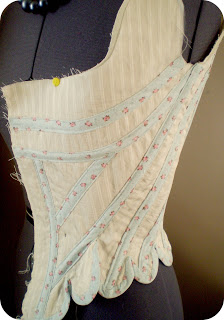 Yesterday I chipped away at my to-do list and got quite a bit accomplished. I made yummy “from scratch” baked beans with bacon and two loafs of white bread. I “borrowed” a cookbook from my mom that was produced by the Ministry of Agriculture, probably in the mid-1970’s about money-wise foods. It has great recipes – the kind that Dan loves, homey, meaty, and traditional. I’m really enjoying pouring through it!
Yesterday I chipped away at my to-do list and got quite a bit accomplished. I made yummy “from scratch” baked beans with bacon and two loafs of white bread. I “borrowed” a cookbook from my mom that was produced by the Ministry of Agriculture, probably in the mid-1970’s about money-wise foods. It has great recipes – the kind that Dan loves, homey, meaty, and traditional. I’m really enjoying pouring through it!
